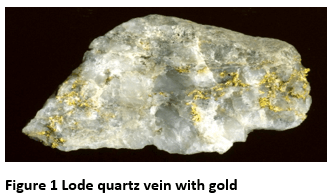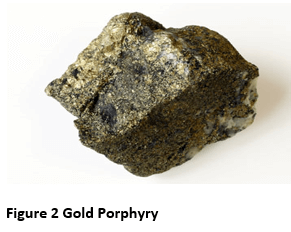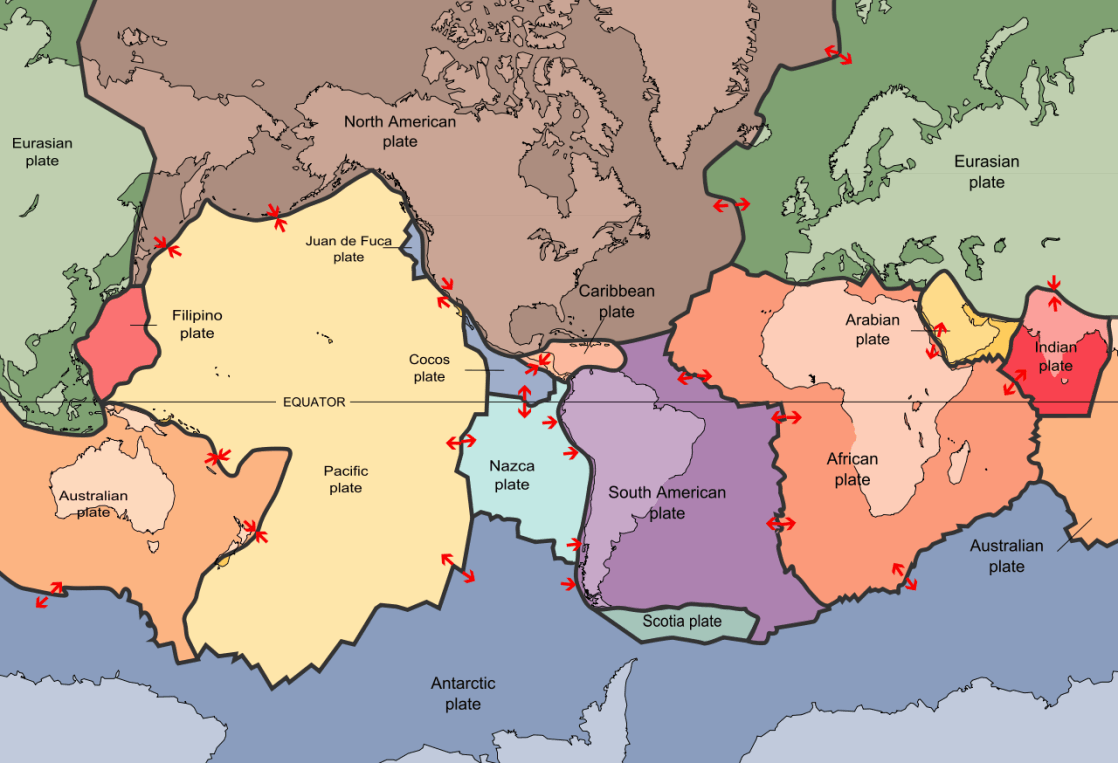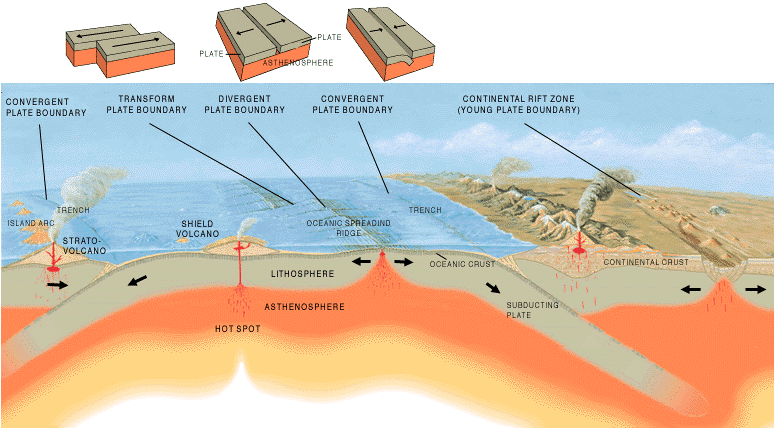Man knew more about gold itself and lusted for it much before he understood the geology of hard rock gold or its deposits. Man had to learn about hard rock extraction methods and how to locate those gold deposits just to satisfy the thirst for that yellow metal. Gold has been the most highly esteemed and sought after precious commodity since the times of antiquity It has spurred on numerous expeditions and conquests dating back to Alexander the Great, to Caesar of Rome and to Cortez’s conquests of Central and South America. The greed for gold throughout history has led to the enslavement of nations, conflict between nations and appalling treatment of men. Gold’s beauty, unique density, relatively low melting point and ability to form coinage made it a natural trading medium.
Gold as a currency dates back to ancient Greece. Various forms of gold-backed currencies developed throughout history. The last gold standard developed was the Bretton Woods Agreement after WWII. Under this agreement, the US dollar alone was pegged to gold and all other currencies were related to the USD. This was eliminated by President Nixon (US) in 1971, thus ending a very long history of the reliance of the gold standard for trade. Up until recently, gold was considered as a safe haven for investment in times of economic and geopolitical turmoil.
Gold is soft, yellow, has a relatively high melting point of 1,064oC and is the most ductile and malleable of all metals. Its atomic number is 79 and is a member of the group 1B metals which is a subgroup of the larger transitional group of metals. The other metals of the 1B group are silver copper and roentgenium. With the exception of roentgenium, the other metals in this group were known as “coinage metals”. Again with the exception of roentgenium, the 1B group have a similar electron configuration with one electron in their outer shell. Like all other transitional metals, including silver and copper, gold’s valence electrons – the electrons that combine with other elements are present in more than one shell. All 1B metals are relatively inert and are corrosion resistant gold is very dense and has a specific gravity of 19.3 and an atomic weight of 197. Gold’s high electrical and thermal conductivity, are only superseded by that of by two other 1B elements -silver and copper.
It exists in nature in its native form, and alloyed, most often with silver and to a lesser extent with copper. It rarely occurs in nature in compounds, but when it does it occurs in tellurides such as AuTe2 and selenides (AUSe). Many pyrite and pyrrhotite minerals contain gold, which is often recovered when extracting copper from lode vein deposits. The purity of gold is stated in terms of fineness and carats (ct). Fineness is defined as the parts per 1000. For example gold with a fineness of 800 means it is 80% pure gold. Alternatively, gold that is 100% pure is 24ct.
There are many different types of deposits that contain gold, – some of them more well defined than others. Several of the most common types are discussed below:
Structurally controlled quartz veining (Lode) is one of the most common types of deposits in North America that contain gold. These deposits are formed when hydrothermal fluids containing silica and gold cool off in cracks and faults in the rock mass. These fluids solidify at a relatively low temperature when compared to magma and some other hydrothermal fluids and thus occur closer to the surface, away from the heat source.- Gold also commonly occurs in conglomerate deposits. Conglomerate deposits are often considered historic placer deposits in gravels that have been petrified.
 Gold along with copper, commonly occurs in porphyry deposits. Porphyry is generally defined as an igneous rock consisting of large-grained crystals such as feldspar or quartz dispersed in a fine-grained groundmass. Hydrothermal fluids containing sulphides associated with gold and copper are commonly deposited in cracks and faults in the porphyry. These hydrothermal fluids are usually at a different temperature than the temperature of formation of the porphyry minerals. For example, the plagioclase feldspars were formed at very high temperatures and in contact with the cooler hydrothermal fluids, forms argillic or clay alteration of such minerals as kaolin. The type of alteration is a key tool for the prospector to determine the probable occurrence of gold and copper. For example, extensive argillic alteration can indicate a major hydrothermal plumbing system, often connected to sulfide mineralization.
Gold along with copper, commonly occurs in porphyry deposits. Porphyry is generally defined as an igneous rock consisting of large-grained crystals such as feldspar or quartz dispersed in a fine-grained groundmass. Hydrothermal fluids containing sulphides associated with gold and copper are commonly deposited in cracks and faults in the porphyry. These hydrothermal fluids are usually at a different temperature than the temperature of formation of the porphyry minerals. For example, the plagioclase feldspars were formed at very high temperatures and in contact with the cooler hydrothermal fluids, forms argillic or clay alteration of such minerals as kaolin. The type of alteration is a key tool for the prospector to determine the probable occurrence of gold and copper. For example, extensive argillic alteration can indicate a major hydrothermal plumbing system, often connected to sulfide mineralization. Gold can occur in Skarn deposits in grades that are economic. Skarns are typically formed at the contact of intrusive granitic magma and carbonate sedimentary rocks such as limestone or dolomite. They also can form where hydrothermal fluids react with limestone and form the skarn minerals such as amethyst, hedenbergite etc. The El Mochito skarn pipes with gold and silver in Honduras are an example of this. The fluids from the magma and the fluids more separated from the magma carry sulphides associated with gold and deposit it with the skarn minerals
Gold can occur in Skarn deposits in grades that are economic. Skarns are typically formed at the contact of intrusive granitic magma and carbonate sedimentary rocks such as limestone or dolomite. They also can form where hydrothermal fluids react with limestone and form the skarn minerals such as amethyst, hedenbergite etc. The El Mochito skarn pipes with gold and silver in Honduras are an example of this. The fluids from the magma and the fluids more separated from the magma carry sulphides associated with gold and deposit it with the skarn minerals- Gold can occur in economic grades in Pegmatites are magmas containing granitic type minerals (feldspar, quartz, mica) which cool slowly and thus allow for very large crystals (>2.5cm) to form. The gold is deposited through gold bearing sulphides carried by the quartz. In addition secondary enrichment can occur through the interplay of the oxide zone and the zone just below the groundwater table to enrich the gold-bearing sulphides.
- Since the theory of Plate Tectonics was developed in the mid-20th century, it has been exploited to target potential mineral deposits. Plate Tectonics, provides a basis for understanding the process of mineralization and ore deposits, including gold. According to this relatively new theory, the lithosphere, which is rigid and forms the outermost shell of the earth, is broken up into 8 major plates and several minor ones (refer to Figure 4). These plates contain both the ocean floors and continental lithosphere. When these plates move relative to each, magma from deep inside the earth is liberated (Refer to Figure 5 for examples of plate boundaries). When the magma cools it can leave behind hydrothermal fluids which are enriched with metals. The fluid percolates through the overlying rock and deposits minerals which may contain gold amongst other valuable metals. Two locations this can occur at include, but not limited to:
- Divergent Plate Boundaries: At mid ocean ridges, water seeps down through cracks in the ocean floor, interacts with the hot magma and carries hydrothermal fluids enriched by the magma. Where these fluids come to surface are the “black smokers” which have a metallic content.
Subduction Zones: These zones occur where the heavier oceanic plate pushes under the lighter continental plate and slides beneath it. Volcanoes are often formed in these zones thus explaining the Ring of Fire around the Pacific Ocean subduction zone. Water can percolate down towards the magma or connate water (water coming from the magma) can be enriched in metals and then deposited in the surrounding rock.


Up until 2006, South Africa was the largest producing nation of gold. However, since then South Africa’s gold production has been eclipsed by China, Australia, Russia, United States, Canada and Peru. Other major gold producing countries include, Uzbekistan, Mexico, Ghana, Papua New Guinea and Chile. The largest gold deposit that is currently being mined is the Grasberg Mine in Papua, Indonesia. This mine which is owned by gold miner Freeport McMoRan has known reserves of 100 million ounces. The largest undeveloped gold deposit is the Pebble deposit located near the foot of the Aleutian Peninsula in Alaska. It has reserves of 107 million oz. The development of this deposit is currently on hold due to environmental concerns, specifically due to being the home of the world’s largest sockeye salmon runs.
Gold deposits are distributed over 5 continents. Figures 5 and 6 show the locations of known gold deposits formed in the Cenozoic and Precambrian ages respectively.


These, then are some of the attributes of gold and the characteristics of some of its occurrences. Hopefully, it can be seen that gold has played a key role in the discovery of the New World and other historical events and continues to play a role in the economic vicissitudes of the world economy.
